Category Archives: Data analytics
Data value chain: Framework, Concepts
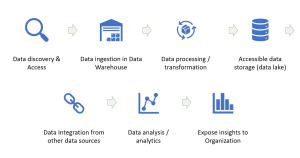
As organizations become increasingly data-driven, understanding the value of data is critical for success. The data value chain framework helps to identify and maximize the value of data by breaking it down into its components. In this post, we will explain what a data value chain is, why it’s important, and how to implement it. Data Value Chain Framework: Key Stages The data value chain (DVC) is a business model that helps organizations understand how to create, manage and utilize their data assets in order to realize maximum business value based on using them. It breaks down the various stages of an organization’s entire journey with its data into distinct …
Data Analysis Types: Concepts & Examples
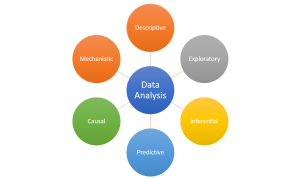
Data analysis plays an important role in understanding the world, discovering trends, and making decisions. Having a good understanding of the different types of data analysis available is essential for anyone looking to make sense of their data. In this blog post, we’ll discuss the six different forms of data analysis and provide examples of each type so you can get a better idea of how they work. The following is a representation of six forms of data analysis. Before getting ahead and understand different form of analysis, lets understand what is Data Analysis? The word “analysis” comes from the Ancient Greek ἀνάλυσις (analysis, “a breaking-up” or “an untying;” from …
Data Quality Characteristics & Examples
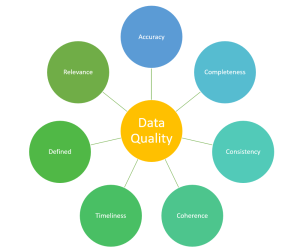
It is no secret that data is an essential component in the day-to-day operations of businesses—as well as the decision making processes. To ensure trust and reliability on the data, organizations must pay close attention to the quality of their data. In this blog post, we will discuss some of the key characteristics that make up quality data, diving into each characteristic and providing examples along the way. Good data governance strategies are also essential for maintaining high quality datasets across an organization’s entire IT infrastructure. These strategies include quality control processes for entering new data into the system; establishing internal documents with procedures for validating all incoming information; assigning …
Ensemble Methods in Machine Learning: Examples
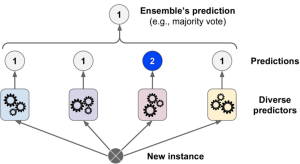
Machine learning models are often trained with a variety of different methods in order to create a more accurate prediction. Ensemble methods are one way to do this, and involve combining the predictions of several different models in order to get a more accurate result. When different models make predictions together, it can help create a more accurate result. Data scientists should care about this because it can help them create models that are more accurate. In this article, we will look at some of the common ensemble methods used in machine learning. Data scientists should care about this because it can help them create models that are more accurate. …
Questions to Ask Before Starting Data Analysis
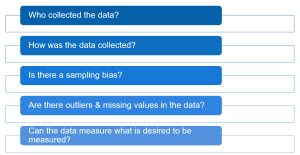
Data analysis is a crucial part of any business or organization. It helps make decisions and assists in strategy development. But before you can dive into the data, there are several questions that need to be answered first. These questions will help you understand whether you have right kind of data for analysis purpose in addition to defining your goals for data analysis. As data scientists or data analysts, it is your job to ask the right questions. Let’s take a look at some important questions to ask before starting data analysis. Who collected the data? When it comes to data analysis, it is essential to know who collected the …
Most Common Data Pitfalls to Avoid
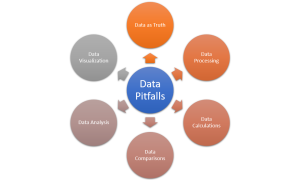
Working with data can be a powerful tool, but there are some common pitfalls that a data professionals including data analysts & data scientists should always be aware of when gathering, storing, and analyzing data. Good data is essential for any successful analytics project, and understanding the most common data pitfalls will help you avoid them. In this blog, we will take a look at what these mistakes are and how to avoid them. The picture below represents the most common data pitfalls to avoid. Considering Data as the Truth One major data pitfall is when people consider data as absolute truth (reflection of reality) without taking any other factors …
Data-Driven Decision Making: What, Why & How?
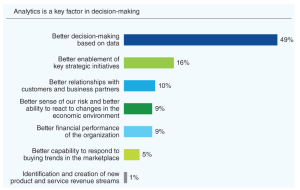
Data-driven decision-making is a data-driven approach to making decisions to achieve desired outcome. More precisely, data-driven decision making is an insights-driven approach to drive decisions and related actions. The data can come from internal and external data sources to avoid data biases. Data-driven decision-makers use data in their decision process to validate existing actions or take new actions (predictive or prescriptive analytics). They make decisions based on the actionable insights generated from the data. The goal is to make informed decisions while ensuring trust & transparency across the stakeholders & organization as a whole. It can be noted that data-driven decision making provides great thrust to digital transformation initiatives. In …
Data Analyst, Data Scientist or Data Engineer: What to Become?
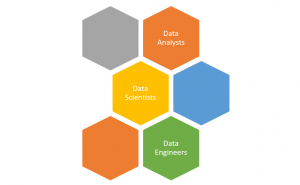
There is a lot of confusion surrounding the job designations or titles such as “data analyst,” “data scientist,” and “data engineer“. What do these job titles mean, and what are the differences between them? Before selecting one of these career path, it will be good to get a good understanding about these job titles or designations, related roles & responsibilities and career potential. In this blog post, we will describe each title / designation and discuss the key distinctions between them. By the end of this post, you will have a better understanding of which career path and related designations are right for you! Shall I become a data analyst? …
Data Governance Framework Template / Example
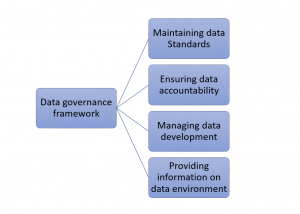
Data governance is a framework that provides data management governance. It’s the process of structuring data so it can be governed, managed and used more effectively. Data governance framework forms the key aspect of data analytics strategy. This blog post will discuss key functions of a standard data governance framework and can be taken as a template or example to help you get started with setting up your data governance program. What is Data Governance Framework? Data governance can be defined as enterprise-wide management of data from availability, usability, security and integrity standpoint. The data governance framework is intended to put some structure around how data can be managed and …
ESG Concepts: Reports, Metrics & KPIs
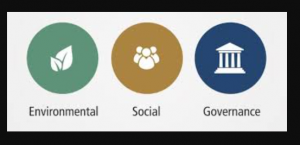
This blog post is geared toward Environmental, Social & Governance (ESG) professionals looking to understand different aspects of ESG and some metrics that can be reported via ESG reports as part of their organization’s ESG reporting (annual reports) in relation to representing the sustainability aspect of their business. An understanding of different aspects of ESG can help you in getting started with ESG initiatives and ESG reporting. ESG initiatives can help companies improve their overall sustainability factor while creating a positive impact on environmental, social, and governance issues. Getting started with ESG-related practices in your organization or department (such as procurement) requires a set of ESG initiatives and related performance …
Top Healthcare Data Aggregation Companies
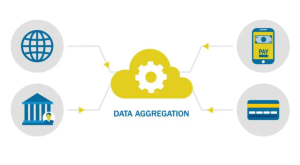
Data aggregation is the process of collecting data from multiple sources and compiling it into a single database. This process is essential for healthcare professionals, companies and startups because it allows them to track and analyze patient data, which can be used to improve patient care. There are many companies that offer healthcare data aggregation services. However, not all of them are created equal. To help you choose the right company for your needs, we’ve compiled the following list of the top healthcare data aggregation companies. This list will be updated from time-to-time. Athenahealth: Athenahealth is a healthcare data aggregation company that provides electronic health records, practice management software, and …
How to Identify Use Cases for AI / Machine Learning
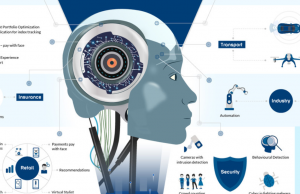
As artificial intelligence (AI ) and machine learning (ML) solutions and technologies continue to evolve, more and more businesses are looking for ways to incorporate them into their operations to realize a greater business impact. But with so many potential applications, it can be difficult to know where to start. In this blog post, we’ll outline some tips for identifying AI / ML use cases. We’ll also provide a few examples of how AI & machine learning can be used in business settings. So if you’re thinking about adding AI or machine learning to your toolkit, read on! This blog post will be appropriate for product managers, business analysts, data science …
Data Analyst Technical & Soft Skills
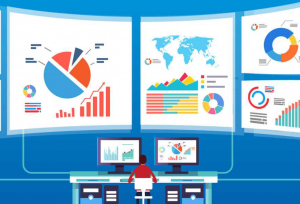
Do you want to become a data analyst? It’s a great career choice! Data analysts are in high demand these days. Companies rely on data analysts to help them make better decisions by turning data into insights. In order to be successful, data analysts need a mix of technical skills and soft skills. Technical skills include expertise in analyzing data. Soft skills include communication and problem-solving skills. Data analysts must be able to take data and turn it into insights that help their company make better decisions. They also need to be able to effectively communicate those insights to people who may not have a technical background. In this blog …
Data Lake: Design principles & Best practices
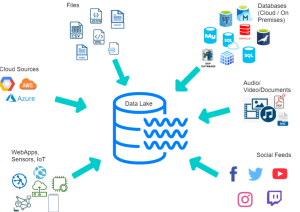
In today’s business world, data is king. The more data you have, the more insights you can glean about your customers, your products, and your operations. And the best way to collect and store all that data is in a data lake. A data lake is a data management and analytics platform that offers several benefits over traditional data warehouses. Data lakes have gained in popularity in recent years due to the growing volume of data being generated by businesses and organizations of all sizes. But before you can reap the benefits of a data lake, you need to design it correctly. The people who should be involved in designing …
Building Data Analytics Organization: Operating Models
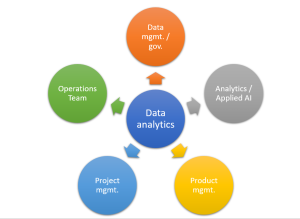
Most businesses these days are collecting and analyzing data to help them make better decisions. However, in order to do this effectively, they need to build a data analytics organization. This involves hiring the right people with the right skills, setting up the right infrastructure and creating the right processes. In this article, we’ll take a closer look at what it takes to set up a successful data analytics organization. We’ll start by discussing the importance of having the right team in place. Then we’ll look at some of the key infrastructure components that need to be put in place. Finally, we’ll discuss some of the key process considerations that …
Differences: Data Analyst & Business Analyst
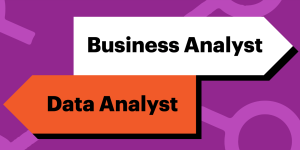
Data analysts and business analysts are two very different positions in the world of business. Data analysts are responsible for examining data and manipulating it into a format that is easy to understand, while business analysts are responsible for taking this data and using it to make informed business decisions. This is not to say that one job is more important than the other – both positions are necessary for a well-functioning company. However, it is important to understand the distinctions between these two jobs so that you can better identify which role you might be interested in pursuing. Data Analysts vs Business Analysts Data analysts and business analysts are …
I found it very helpful. However the differences are not too understandable for me